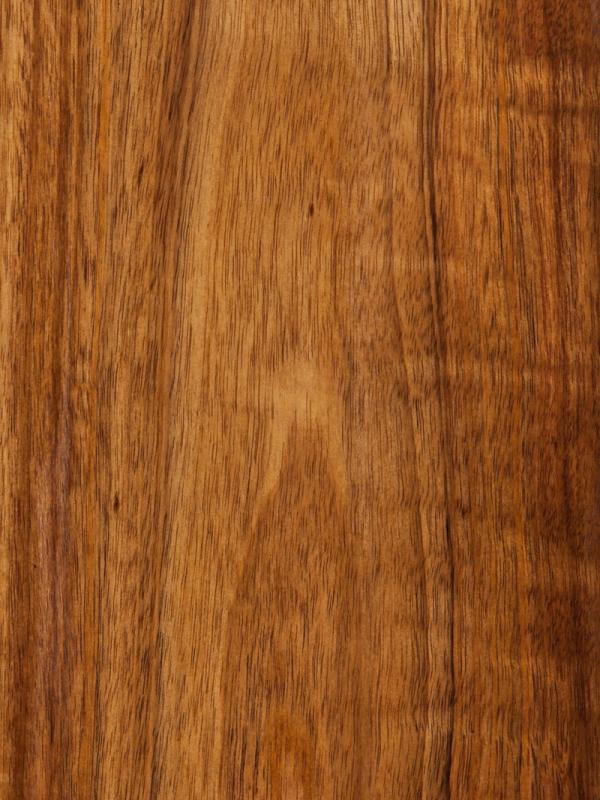
Family: Fabaceae Family. Latin Name: Guibourtia ehie.
Origin: West Africa including Cameroon, Gabon, Ghana, Ivory Coast, Liberia, and Nigeria.
Common Names: Ovangkol, Mozambique, African Walnut, Amazique.
The Tree: The Shedua tree can grow to heights of 100 feet to 150 feet tall with trunks that are 3 feet to 5 feet in diameter and cover with smooth bark. The base of the tree is heavily buttressed.
Appearance of Wood: The heartwood color ranges from light to medium yellow, light orange or a reddish-brown highlighted by darker brown or black striping. The sapwood is quite unmistakable and pale yellow in color. The grains can be straight, wavy, or interlocked. Shedua generally has a medium texture with a nice natural luster due in part to the high silica content. On occasion, tiger stripe, fiddleback or mottled figuring can be found on the wood.
Density: Shedua is considered to have a medium to high-density level and is very hard with good strength properties. Average reported specific gravity ranges from .67 to .82 with an average dried weight of 51 pounds per cubic foot. Janka Hardness is 1,330 pounds of force.
Drying and Shrinkage: Shedua makes an excellent turning wood once the wood has been dried. Average reported shrinkage values are 4.3% radial, 8.3% tangential, 12.1% volumetric.
Working Properties: Shedua has good working properties. The wood contains a silicone content that can gum up blades and cutting tools which can make the working process difficult. Interlocking grains can cause tear-out issues. Generally, Shedua does turn, glue, and finish well.
Durability: Shedua is considered a very durable wood that has good resistance to termites.
Uses: Shedua is used as veneer, flooring, furniture, cabinets, trim, musical instruments, carving, and turned objects.
Availability: Shedua not listed on the CITES Appendices, however, it is categorized on the IUCN Red List of Threatened Species as a species of least concern.